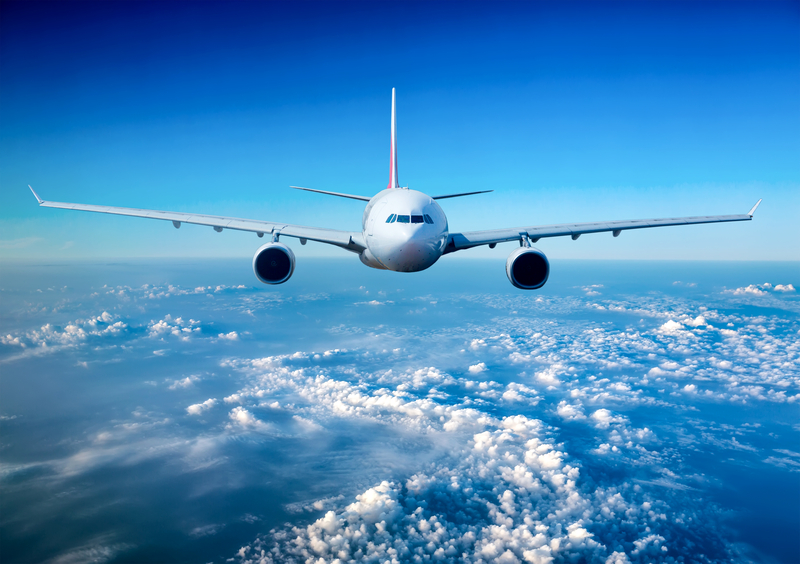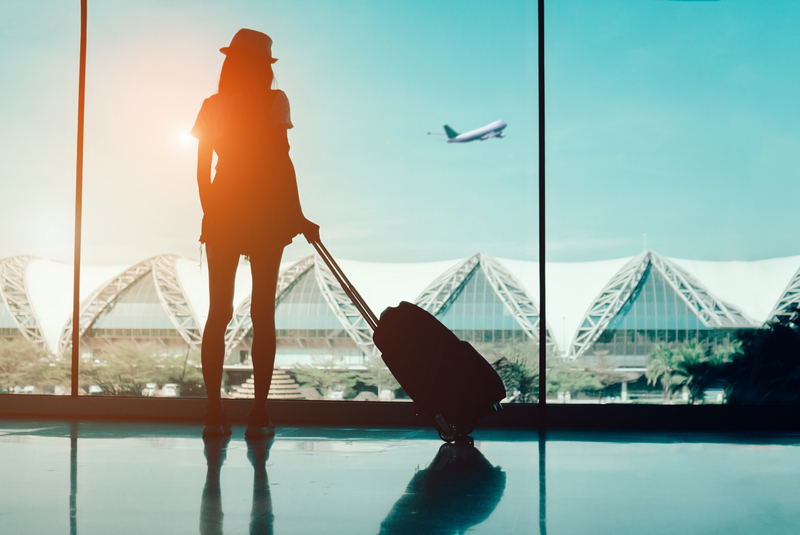When the global pandemic began, parts of Europe went into total lockdown. Italy’s nationwide lockdown began March 9, and many other countries followed. Others, like Sweden, initiated “soft” lockdowns without widely imposed travel bans or closures. But as countries started to get a handle on the coronavirus, thanks to more knowledge, testing and tracking, they began to consider reopening. In June 2020, the European Council issued a list of countries that were safe for international travel.
This announcement came just in time for the summer vacation months and included countries like Australia and New Zealand, Canada and Japan. However, individual EU member states could still create their own restrictions. The European countries safe for travel from at least some of the approved areas included Italy, Sweden, Germany, France and Greece.
The council reviews the list of approved countries to travel to every few weeks and publishes new guidelines as it sees fit. Recently, it recommended a new list of countries that are safe for international travel.
What Are The Criteria To Be Placed On The List?
The countries approved for travel to the EU aren’t decided on a whim. When the council reviews the list of approved countries to travel to, they use a set of criteria based on the current data:
- New cases must be stable or decreasing in comparison to the previous 14 days
- The number of new cases per 100,000 inhabitants over the last 14 days must be at or below the EU average
- The country must have a functioning system for testing, contact tracing, treatment and containment, plus reliable reporting
- The total average score for International Health Regulations (IHR) may also be taken into account
In the case of China, reciprocity is also a determining factor. That is, China will be deemed an approved country so long as it reciprocates in kind and also allows travellers from the EU to enter.
Countries Approved For International Travel
The countries approved for travel to the EU are:
- Australia
- Canada
- Georgia
- Japan
- New Zealand
- Rwanda
- South Korea
- Thailand
- Tunisia
- Uruguay
Keep in mind that each EU country is free to create its own list of countries that are approved or not approved. The council reviews the list of approved countries to travel to only to make recommendations and to provide information and consistency.
Not from one of the countries approved for travel to the EU? Croatia opened its borders to all international travel back in May. Travellers must bring a negative test result from the past 48 hours or quarantine on arrival.
Who Is Exempt from International Travel Restrictions?
While the council reviews the list of approved countries to travel to, they also review who is exempted from the travel restrictions. EU citizens and their family members, as well as long-time EU residents and their family members, are exempted. Essential workers are also exempted, including:
- Humanitarian workers
- Health care workers
- Scientists and researchers
In addition, there are several other categories that are exempt:
- Military members
- Asylum seekers
- Passengers in transit
- Diplomats
- Frontier workers
- Travel for essential family reasons
Note that even if you’re an EU citizen travelling within the EU, or are an essential worker or a member of a permitted group, you may still have to take a test, quarantine or be subject to other requirements on arrival, depending on the country.
What Countries Have Quarantine Requirements?
The council reviews the list of approved countries to travel to, but it’s up to individual member states to create their own guidelines for entry. Many EU countries loosened their restrictions in June and July for tourism season, but are now tightening them back up. Here’s a quick overview:
- Finland: Finland reintroduced border checks with Andorra, Austria, Belgium, the Netherlands, Slovenia and Switzerland.
- France: France requires a negative coronavirus test for travellers from any of 16 countries on its high-risk list, including the US, Israel, South Africa, India and Turkey.
- Germany: Germany requires a negative test or 14 days of quarantine from an even larger list of countries, including many countries approved for travel to EU. The list includes the same countries as France, plus Brazil, Indonesia, Mexico, Ukraine and more.
- Greece: To enter Greece, travellers from Belgium, Bulgaria, Czech Republic, Malta, Netherlands, Romania, Spain and Sweden must have a negative test within the past 72 hours.
- Italy: Travellers who live in or have transited through Spain, Malta, Greece or Croatia must have a negative test within the past 72 hours or quarantine upon arrival.
- Norway: With some of the strictest international travel restrictions, Norway requires anyone from outside the EU to quarantine for 10 days. Travellers from Belgium, Bulgaria, Czech Republic, Iceland, the Netherlands, Poland, Portugal, Romania and Spain must also quarantine.
Even European countries safe for travel may require travellers to fill out a public health information form, quarantine for a set amount of time, or show a negative test or take one upon arrival. Currently, most travellers should assume that international travel will involve testing or quarantine, and be prepared accordingly.
European Countries Safe for Travel
Thinking about international travel? While the council reviews the list of approved countries to travel to internationally, it doesn’t have a similar list for countries within the EU that are safe. If you’re a traveller from one of the ten approved countries and you want to take a trip somewhere else in the EU, it’s smart to choose a destination that is epidemiologically safe – that is, has a low occurrence of the coronavirus.
The six countries below have some of the EU’s lowest coronavirus rates. However, you should always take precautions, follow local guidelines and check ahead of time regarding outbreaks or new restrictions. Also keep in mind that your own country may have quarantine requirements upon your return.
Cyprus
Cyprus has the second-lowest occurrence of the coronavirus of all the EU countries, after Latvia. This island off the coast of Turkey in the Mediterranean Sea is known for sun-kissed beaches, delicious seafood and gorgeous sunsets. It’s even the birthplace of Aphrodite, the goddess of love.
Estonia
Estonia is known for its historic old town of Tallinn, a UNESCO World Heritage Site filled with medieval architecture like the Gothic-style town hall and 13th-century St. Nicholas Church. Pre-pandemic, Tallinn was a popular stop for cruise ships – now you’ll have to get there by plane or take a road trip.
Hungary
Land-locked Hungary is often overlooked in favor of its popular neighbor Austria, but its capital of Budapest is worth a visit. It’s also known for its thermal springs, with more than 1500 spas, some dating back to the Roman and Greek empires.
Finland
Craving a trip to Scandinavia? You can’t go wrong in the “happiest country in the world.” With northern lights, colorful architecture, unique food and friendly people, it’s no wonder this country is so happy.
Greece
With its ancient ruins, white-sand beaches, fresh seafood and high-end shopping, Greece has always been one of the most popular tourist destinations in the EU. It’s also seen relatively low coronavirus numbers, and is allowing travellers from all ten of the countries approved for travel to EU.
Croatia
Croatia’s rugged coastline is home to popular destinations like Split and Dubrovnik. But be careful: While Croatia has opened its borders to all international travellers, that doesn’t mean you won’t face restrictions going home: the UK in particular recently implemented quarantine for travellers returning from Croatia.
Staying Safe During International Travel
Whether you’re headed to one of the European countries safe for travel or another destination, it’s important to stay safe. The European Union Aviation Safety Agency (EASA) issued the COVID-19 Aviation Health Safety Protocol in late June to help ensure the safety of air passengers and workers. These guidelines recommend that only passengers be allowed inside the airport, not accompanying persons; that physical distance of 1.5 meters is kept; installation of hand sanitizing stations; wearing of masks by all persons in the airport; reduced food and drink service; fewer carry-on items; and thermal screening upon arrival.
The coronavirus situation is always evolving, but there are some safety measures you should always take during international travelling . These include being aware of your own risk factors, frequent hand washing and sanitizing, not touching your face, and always wearing a mask in public places. Wearing masks is required in almost all EU countries, and there can be hefty fines if you refuse.
The status of a country – or even of certain areas within a country – can change quickly. Remember to not only stay up to date on the latest alerts for the country, but also for the particular city and area you’re travelling to. European countries safe for travel are always changing, and the council reviews the list of approved countries to travel to every two weeks, so check back often.
Once you’re on your way, be sure to check for flight cancellations or delays. Air traffic has plummeted as many travellers choose to stay home, and delayed or cancelled flights are common. If this happens to you, don’t make the mistake of thinking you’re not owed compensation. The European Commission (EC) is siding with passengers and enforcing its Passenger Rights Law even in the face of coronavirus. Depending on the country in which your airline is located, it may be a struggle for you to get the compensation you’re owed. That’s where Travel Refund can help. We’re experts in airline compensation, and we fight to get your money back. Contact us to see how we can help.


